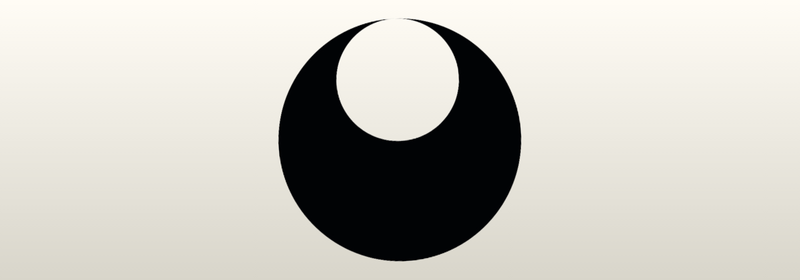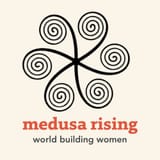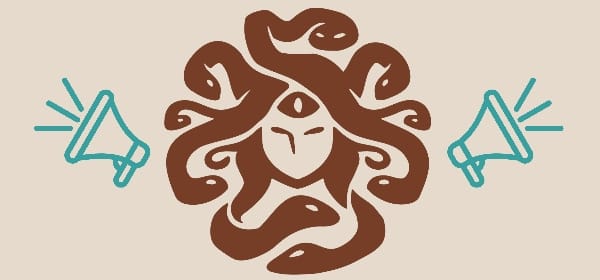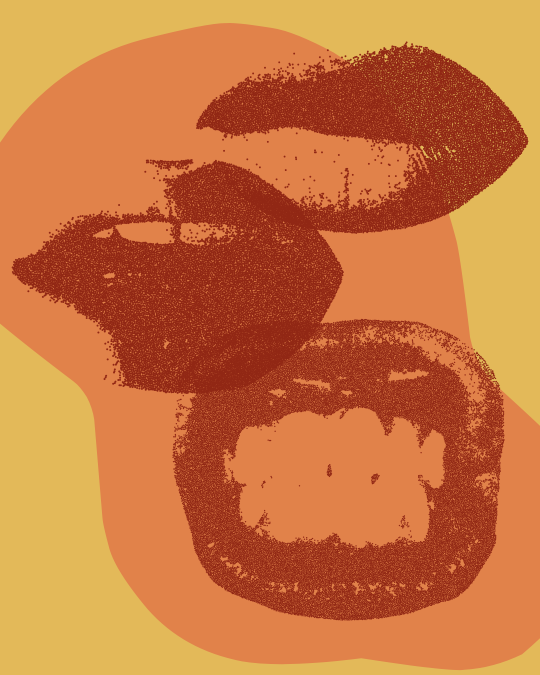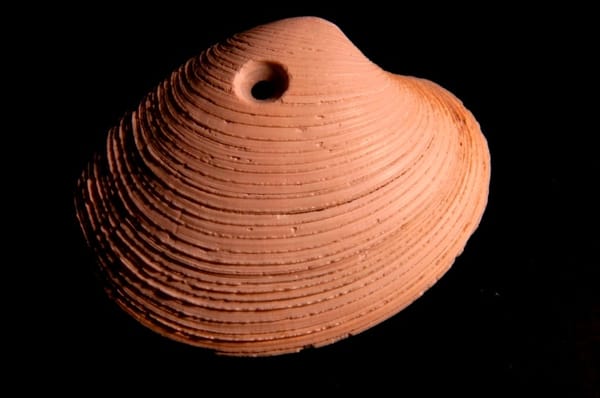Asymmetrical Re-worlding, Part 5: Let’s Get Metaphysical! | by Therese Doherty
We don’t need this notion of postfeminism because we don’t need to get beyond feminism but right down into the belly of it, right into the beating heart, the ground of female being that is our birthright to embrace.
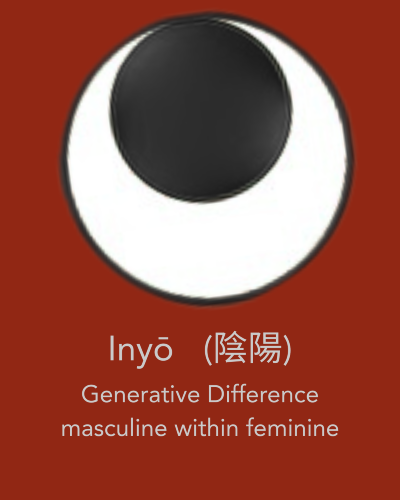
Subscribe between now and Halloween, and get six months of a $12 rate for $8, includes private event invites, first event just after Halloween, two more in winter.
(. ❛ ᴗ ❛.) Or, just leave us a tip. (. ❛ ᴗ ❛.)
We do love to pay these writers, reporters, artists.

Previously: Part 1, Part 2, Part 3, & Part 4
Asymmetrical Re-worlding, Part 5: Let’s Get Metaphysical!
I hope you have stuck with me thus far on this long pilgrim’s path of exploration beyond the Mountains of Dualism and towards bodymind integration, disproving the biological essentialism and sexist nonsense of the postfeminists, because this final part is where things get potentially (r)evolutionary.
Humans are biological beings and therefore subject to ecological limitations.[1] But we’re also symbolic, cultural creatures who are highly susceptible to the ministrations of nurture (or its lack), and in some respects, ‘culture seems to enjoy the upper hand’.[2] Astonishingly, even ‘something as obviously biological as pain in childbirth’, Sarah Blaffer Hrdy remarks, ‘is experienced differently depending on cultural expectations’.[3] Socialisation is powerful stuff!
In many ways I’d rather we stopped using the words feminine and masculine,[4] and that we spoke only of female and male, women and men, girls and boys, seeing as so many people don’t seem to understand the distinction between sex and gender. But there is, perhaps, still a place for the big metaphysical concepts of The Feminine and The Masculine, if we can reimagine them in the right way (as archetypes, not essences). Esmée Streachailt’s brilliant insight that ‘The world will need to become phenomenologically feminine in order to preserve the ecology that evolved humans’,[5] gives me a foundation from which to build a new symbolism based on philosopher/psychiatrist/
neuroscientist Iain McGilchrist’s claim that reality hinges upon ‘a profound asymmetry’:
More than a century ago Louis Pasteur wrote: ‘Life as manifested to us is a function of the asymmetry of the universe . . . I can even imagine that all living species are primordially, in their structure, in their external forms, functions of cosmic asymmetry.’ Since then physicists have deduced that asymmetry must have been a condition of the origin of the universe: it was the discrepancy between the amounts of matter and antimatter that enabled the material universe to come into existence at all, and for there to be something rather than nothing.[6]
Asymmetry implies symmetry, McGilchrist says, but it is fundamentally adaptive and generative in a way that symmetry, in its sterile perfection, is not:
what is needed is both symmetry and asymmetry – themselves an asymmetrical pairing – together. It is neither the breaking of the symmetry alone, nor (alone) the symmetry that is broken, but the new breaking, in conjunction with the old symmetry, the combination of the two, that is generative.[7]
This idea runs right through McGilchrist’s philosophy, nesting as he does a variety of concepts within an overarching whole: union and division within union; the one and the many within the one; non-duality and duality within non-duality; both/and and either/or within both/and; good and evil within good, and so on. He points out that the sex chromosomes—the symmetrical XX versus the asymmetrical XY—together form an asymmetry that results in new life.
The yin yang (discussed at the end of Part 1) whirls asymmetrically, with the yin dark and the yang light, seeking balance in its movement. But McGilchrist proposes that the Japanese equivalent, ‘the inyo symbol (where in = yin and yo = yang) captures more clearly … the idea of asymmetry combined with symmetry, and at the same time the way in which the energy of yo (yang) sits within the receptive space of in (yin)’,[8] glorious in its calm containment.
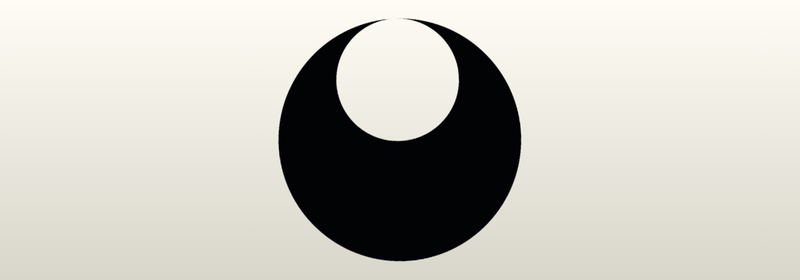
Perhaps this will be controversial, but could this asymmetry be the basis for an understanding of human relationships and cultural formation?
Because humans of either sex are created in and birthed from the bodies of women, I see the female as the whole that unites female and male. The Feminine contains both The Feminine and The Masculine. As the character Finn says in Louise Hewett’s novel Mist, from the male perspective, ‘without women, we’re nothing. We don’t even exist. A woman is the beginning, and we’re all half female, anyway, what with the chromosomes from the mother and everything.’[9] This idea is not new—the parthenogenetic Goddess who produces all life from her body is found in the oldest creation myths; and Monica Sjöö and Barbara Mor speak of the ‘gynandrous Great Mother’[10]—but the metaphysics of asymmetry, and the image of the inyo, is what makes this truth finally feel graspable.
In terms of socialisation, Catherine Keller argues that ‘the female connection to mother and world preserves the oceanic feeling of an empathic continuum initially common to both sexes’.[11] If this is the ‘phenomenologically feminine’ source from which we all derive, then what The Feminine really represents is The Human—the common ground from which girls and boys, women and men, all originate. The ‘oceanic feeling’ of early childhood is not a state that must be left behind (as is normally the case for males), but the natural condition that forms the foundation for all human development. And within that reality of connection and ‘primal empathy’[12] we can differentiate interdependently and uniquely in creative response to the influence of others and the world. As McGilchrist says, it is ‘The coming together of sameness and difference that makes relationship possible’.[13] There is no hierarchy here, for female and male are each necessary, though they are joined within the gynocentric Earth-community as a whole. As Keller elaborates,
we may assume that the male child is also originally a relational being, feeling at first connected to the world every bit as intimately as the young girl. At a certain point in his development the lack of an intimate paternal presence throws the boy into the beginnings of his woman-negating self-definition (where “be a man” means “do not be like a girl”).[14]
Genevieve Vaughn ‘coined the word “masculation” for this process in which the boy is socialized into a false, non-nurturing identity’.[15] He achieves self-definition according to what he is not, what as a male he should not be, and denies any trace of The Feminine in himself. He learns to subjugate not just women, but the wounded humanity in himself. The resulting devaluing of The Feminine and the low social status of women makes it all the more difficult for men to break free from their ‘masculated’ identities. Giving high status to women, on the other hand, Riane Eisler points out, would mean that ‘men can more comfortably themselves exhibit stereotypically feminine styles of behavior without feeling a loss in their own status’.[16] The wise man desires emasculation.
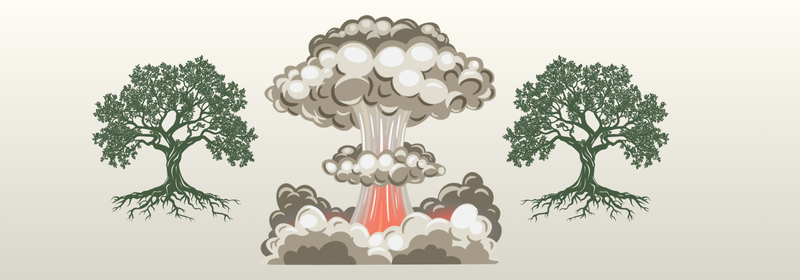
We absolutely must hold men accountable, while also acknowledging that patriarchy is a toxin that poisons us all. We all have choices about how we relate to our socialization. Discovering this agency is the process of consciousness raising. The male who is ‘masculated’ is more susceptible to patriarchy's harmful consequences than women and girls, who generally retain more of a connection to the mother-source that men and boys are severed from (and this severing is what makes men dysfunctional and potentially dangerous). As Keller maintains, ‘the connected, permeable ego ascribed to female children fits the description of an actual entity … much more nearly than does the rigid and clearly delineated male ego’.[17] As I said in my review of Keller’s book, ‘because we usually remain closer to that connected, permeable base, girls and women can model the transformation that must occur for both women and men to achieve postpatriarchal human selfhood’.[18]
The cure for male estrangement is clearly the ‘phenomenologically feminine’ system of matriarchy, involving as it does ‘social mothering’—caring, nurturing and gift-giving, performed by everyone—women (both mothers and non-mothers) and men, according to need (which of course will require a complete overhaul of the socioeconomic system and the way we live). Jane Clare Jones says, ‘We must demand the possibility of a challenge to male dominance at its most fundamental level, and a vision of sexuality, and social organization, grounded on the possibility of real mutuality between human subjects.’[19]
For anyone who thinks that men are not cut out for nurturing, it should be clear by now that humans are not hardwired to behave in inevitable ways. Instead, we respond to circumstances. We learn—just as we learned that men are dominant and women are submissive and wrongly came to believe this was a cosmic truth. As Hrdy states, nurturing behaviour seems to be a ‘unisex [potential]’ in many mammals,[20] and ‘The act of caring has its own consequences—habits of mind and emotion.’[21] There is room for men to be the protectors and providers they claim to be in a matriarchal world, alongside women who have always been the protectors and providers for their offspring and kin. For everyone in matriarchy, say Sjöö and Mor, ‘there is a close identification with the collective group of mothers, with Mother Earth, and with the Cosmic Mother’.[22] Mothers and children are at the centre, because children are the seeds of culture, ready to grow into future society, and if something goes wrong in the early years of development, the consequences can be devastating.
If we could stop socialising girls and boys into gendered roles, then they would have a much better chance to attain self-actualisation as fully-rounded humans, rather than as limited, sexist stereotypes. Most importantly, men would remain within the circle of The Feminine rather than disconnecting from it and denying its natural home within them, and their natural home within it. ‘[T]he issue is full involvement on the part of female and male parent-figures in what traditionally was “mothering”’, Keller says:
Then there is reason to think … that gender identity would simply break down … [leading to] more self-differentiation for women, more affective connection for men. The sexually derived sense of self would indeed change, but in the direction of more, of multiple possibilities, and not of even fewer (as the “unisex” version of androgyny, for instance, implies).[23]
This would be the pluralistic, liberating dance of différance, of betweenness: ‘Everything is understood within its penumbra of significances, in its context – all that encircles it.’[24]
Visually, I think the inyo is suggestive of many things: Grandmother Cosmos birthing Mother Earth; Earth gestating Life; female enfolding female/male; ovum engulfing sperm;[25] womb cradling foetus; mother holding child; nature gently embracing culture; the dark of the unconscious encircling the light of consciousness …
She is the dark night and the black soil that holds within itself the intense powers of light, the secrets and the forces of all life. She is the mouth, the vagina, the passionate and wise source from which all comes and to which all returns. . . .
The black-winged night laid a silver egg (the moon) in the womb of darkness, in the dark waters. The divine one resided in that egg during a whole year. Then she by herself alone divided into two halves and out of these halves She formed heaven and earth. . . .[26]
The asymmetry of The Feminine and The Masculine enfolded by The Feminine—
—does not suggest domination or imbalance, but a certain necessary configuration within the larger dance that generates and sustains life. It suggests priorities: the values of care and egalitarianism that must be central for cultural flourishing. Everyone must bow to the needs of the mother-child dyad, to mother-right—though of course that would occur within a wider cultural nexus that enables everyone to grow and thrive, especially women. ‘What the mother, and The Mother, wants is a social and cultural order that supports her making human people and her being a human person in the female mode at the same time’, Streachailt says. ‘If this were the story of how the world works—our ontology—then men and women could know ourselves to be bodyselves in the male and female modes instead of flattened into bodies in search of themselves, wearing gendered masks.’[27]
I’m aware that all of this might sound like wishful thinking, but (unlike the nonsensical fantasies of the postfeminists I have refuted in this series) it’s built upon sound reasoning—and reason is embodied thinking. It is the explicit, the known, surrounded by the implicit, the unknown, united within the wholeness of the implicit—seen in the inyo. All together this thinking weaves a new dream for human life on Earth.
The so-called ‘male domain — of thought and action’ that has superseded the ‘female domain — of the body and being’ (see Part 1), has always been a false domain, albeit a pervasive one that invades our bodyminds via our upbringings and cultural conditioning. The reality is that The Feminine—the union that holds division and union within it—never split the body and being from thought and action. All of the different facets of existence are connected and flowing, part of a multi-layered wholeness. Matriarchy is ‘the experienced unity of psychic/productive/sexual/cosmic power and activity in the egalitarian collective of women’,[28] and it is returning.
Heide Goettner-Abendroth speaks of a matriarchal ‘consensus revolution’ that, in contrast to ‘conquest revolutions’ (which rely on violence and an elite leadership), would transcend left/right models of politics: ‘an open, nonabsolute model of the future that oversteps the prevailing system—not through orthodoxy or strategy but through countless diverse, intangible experiments.’[29] ‘It is’, she says, ‘a flexible utopia: it has a perspective but does not slavishly adhere to it.’[30] It values the continuous process of change, rather than focusing exclusively on the desired outcome. This is reminiscent of Françoise d’Eaubonne’s idea of ‘mutation’, a necessary cultural metamorphosis that occurs from the bottom up:
feminism is not solely … the protests of the human category that has been crushed and exploited from the most ancient times … Feminism is entire humanity in crisis; it is the reinvention of species; it is truly the world that will change its base. And much more still: there is no longer any choice; if the world refuses this mutation that will surpass all revolutions just as revolutions surpassed the spirit of reform, it is condemned to death …[31]
Renée Gerlich says in an inspiring speech:
… the test of whether our spiritualising or our politicking are about anything real, lies in whether they are moving us closer to a world without rape. That is what distinguishes a truly progressive spirituality or politics. In party politics, only a women’s party can offer this vision. Even the Dalai Lama has said that women will save the world. And it’s true, because we are the ones who long for the change all humanity needs, not as an abstraction or a nice idea, but in our bones, as a need that our lives depend on.
There are, therefore, multiple paths, multiple possibilities, as long as we found our efforts upon the right values, on female solidarity, and engage with the ongoing process of Earth’s phenomenologically and ontologically feminine evolution.
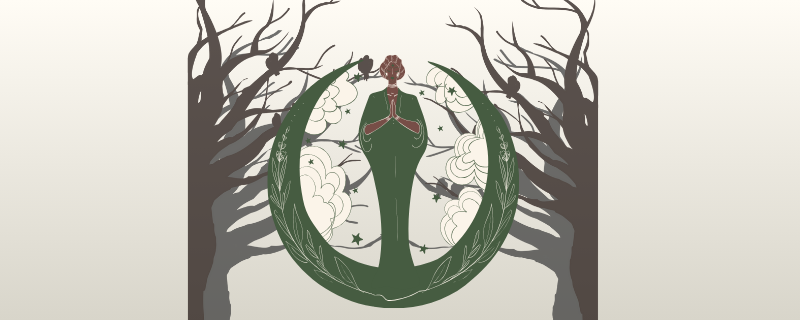
Ultimately, the predicament underlying all other predicaments is the patriarchal outgrowth of civilisation itself. We have lost our connection to land, to spirit, to the eros of our natural animality. We are living in ways that are inherently traumatising and damaging to our health. No one escapes from the harm, though some experience it more acutely than others—most often women and children.
Feminism grapples with the difficult recognition that men as a class still present a danger to us, and with the uncertainties of a future of increasing misogyny and disembodiment, as well as the present and coming reality of ecological collapse. We need feminism now more than ever, which is why I think that anything that distorts what it is, and misrepresents it to young women, must be challenged (hence why I was called to write this piece).
The work our feminist foremothers did was monumental and created a foundation that can be built upon by the next generations, and though imperfect, can be built upon still. We don’t need this notion of postfeminism because we don’t need to get beyond feminism but right down into the belly of it, right into the beating heart, the ground of female being that is our birthright to embrace. We need to be able to recognise the enemy, and to refuse to turn against our own kind, and feminism provides us with the clear sight and solidarity to do this. The reactionary postfeminist trend only serves to distract us from the women’s liberation movement that already exists, and the women who are still working to change the world. They don’t have all the answers, but they are persistently asking the right questions, always passionate, fierce and endlessly nurturing of female potential.
Feminism is not anything we want it to be. It’s still a collective movement for liberation that is based on evidence-based analysis and specific women-centric values, but Goddess!—it allows the mind to flow freely and fly beyond what is known within the confines of the dominant culture. It’s vitalising and beautiful, and I wish more women could see that.
Feminist thinking goes so far beyond inhumane patriarchal assumptions that it breaks free into new conceptions of our humanity, relating and loving, based upon pleasure and flourishing, not pain and debasement. Streachailt says:
Radical feminism recuperates lost women’s knowledge, critiques the fantasy laid over women’s realities by men’s cultures, organizes to support/heal women harmed by men’s social order, and imagines new worlds where humans are not so fragmented and overdetermined by roles written to belittle them. Radical feminism would intervene in that damage before it can do irreparable harm to bodies, lives, and whole communities.[32]
When we realise, as women, that we are not what Man says we are, and we (re)discover our wild and wise natures, then society as it currently exists will collapse. We will withdraw our labour from what does not serve women~children~Earth, and our ‘no’ will be inviolable. And while to the immature patriarchal mind this may seem like wilful chaos and destruction—which they fear—it will actually be the deepest form of care and (re)creation. Men too will (re)discover that they are not what Man says they are, and that full humanity is their birthright, long unclaimed.
Healing means coming to wholeness, and when women and men are whole, there will be a new phenomenologically and ontologically feminine world, a world we once knew, but forgot. This is true (r)evolution.
We women have a bone memory of what egalitarian, free, peaceful life was like. And we have the diverse, flowing, generative solutions, because in the beginning we created culture … and the children followed.
Therese Doherty lives with chronic illness and occasionally writes and makes art, but mostly just reads a lot. She can be found here: @offeringsfromthewellspring.
Though, in civilisation we live as if we are not. ↩︎
Cordelia Fine, Testosterone Rex: Myths of Sex, Science, and Society, W. W. Norton & Company: New York, 2017, p. 126 (pdf page number) – find this book in the Radical Feminist Library ↩︎
Sarah Blaffer Hrdy, Mother Nature: Maternal Instincts and How They Shape the Human Species, Ballantine Books: New York, 1999, p. 165 ↩︎
Originally these words just meant ‘pertaining to the female’ or ‘pertaining to the male’, and were not disconnected from sexed bodies. Detaching these concepts from biology and then applying them to abstract concepts, behaviours and clothing styles, is where much of the confusion has come from. See ‘De-gendering gender?’ by Dana Seilhan for more discussion of this. ↩︎
Esmée Streachailt, ‘Re: Framing Radical Feminism: Welcome to the Occupation, Cont.’, THE RADICAL NOTION, Issue Four (Summer 2021), p. 115 – all issues are available to read online or download for free here: https://theradicalnotion.org/ ↩︎
Iain McGilchrist, The Master and His Emissary: The Divided Brain and the Making of the Western World, Yale University Press: New Haven, 2009, p. 13 – I find McGilchrist’s perspective on the asymmetry of the brain hemispheres not just fascinating, but also holistic and empathetic, and it therefore aligns well with feminist principles (at least for me). He writes, ‘a society is, or should be, an organic unity, not an assemblage of bits that strive with one another. It is as if every organ in the body wanted to be the head.’ p. 444 ↩︎
Iain McGilchrist, The Matter With Things: Our Brains, Our Delusions, and the Unmaking of the World, Vol. II: What Then is True?, Perspectiva Press: London, 2021, p. 1034 – McGilchrist is a man who gets it. He writes, ‘we have abandoned … Nature, whose meaning is that-which-is-about-to-be-born, and is feminine – and what’s more a goddess; Nature, that, like Kali, is wild, and gives life and destroys – or rather does not destroy, but transforms one being into another; Nature, that is our mother and our healer and our home, as well as our ultimate fate; Nature, that we are reviling and doing our best to devastate – is the great whole to which we belong.’ p. 1325 ↩︎
McGilchrist, The Matter With Things, pp. 1034-5 ↩︎
Louise M. Hewett, Mist (Pictish Spirit #1), Egg & Serpent Studio, 2016, p. 579 ↩︎
Monica Sjöö & Barbara Mor, The Great Cosmic Mother: Rediscovering the Religion of the Earth, HarperOne: San Francisco, 1987/1991, p. 66 – find this book in the Radical Feminist Library ↩︎
Catherine Keller, From a Broken Web: Separation, Sexism and Self, Beacon Press: Boston, 1986, p. 136 ↩︎
Keller, p. 184 ↩︎
McGilchrist, The Matter With Things, p. 846 ↩︎
Keller, p. 137 ↩︎
Genevieve Vaughn, For-Giving: A Feminist Criticism of Exchange, Plain View Press, 1997, p. 49 – read or download this and other books for free here: http://www.genevievevaughan.org/books/ ↩︎
Riane Eisler, Sacred Pleasure: Sex, Myth, and the Politics of the Body, HarperOne, 1995, p. 440 (ebook page number) ↩︎
Keller, p. 189 ↩︎
There are still significant challenges associated with female self-actualisation, so I’m not implying that we don’t have work to do on ourselves. But that’s what feminism is for! ↩︎
Jane Clare Jones, ‘Editorial Statement: The Subject of Desire’, THE RADICAL NOTION, Issue Seven (Spring/Summer 2022), p. 8 ↩︎
Hrdy, p. 209 ↩︎
Hrdy, p. 212 ↩︎
Sjöö & Mor, p. 67 ↩︎
Keller, p. 139 ↩︎
McGilchrist, The Master and His Emissary, p. 447 ↩︎
‘To [anthropologist] Meredith Small, the story of the female’s role in conception is a miniature of the overall narrative. She sees the popular understanding of conception as “an outdated allegory of human sexuality” featuring the male as “aggressor, persuader, conqueror.” Recent research on human fertilization suggests something of a role reversal. Small suggests the ovum “reaches out and envelops reluctant sperm.” “Female biology,” she concludes, “even at the level of egg and sperm interaction, doesn’t necessarily dictate a docile stance.”’ Christopher Ryan & Cacilda Jethá, Sex at Dawn: How We Mate, Why We Stray, and What It Means for Modern Relationships, Harper Perennial: New York, 2010/2012, p. 239 (pdf page number) ↩︎
Sjöö & Mor, p. 55 ↩︎
Esmée Streachailt, ‘Re: Framing Radical Feminism: Luce Irigaray and Being Beyond Patriarchy’, THE RADICAL NOTION, Issue Nine (Spring/Summer 2023), p. 76 ↩︎
Sjöö & Mor, p. 16 ↩︎
Heide Goettner-Abendroth (translated by Maureen T. Krause), The Dancing Goddess: Principles of a Matriarchal Aesthetic, Beacon Press: Boston, 1982/1991, p. 232 ↩︎
Goettner-Abendroth, p. 233 ↩︎
Françoise d’Eaubonne (translated and edited by Ruth Hottell), Feminism or Death, Verso: London, 2022, p. 4 – find this book in the Radical Feminist Library ↩︎
Esmée Streachailt, ‘Extra-Feminist: Damage’, THE RADICAL NOTION, Issue Two (Winter 2021), pp. 26-7 ↩︎
